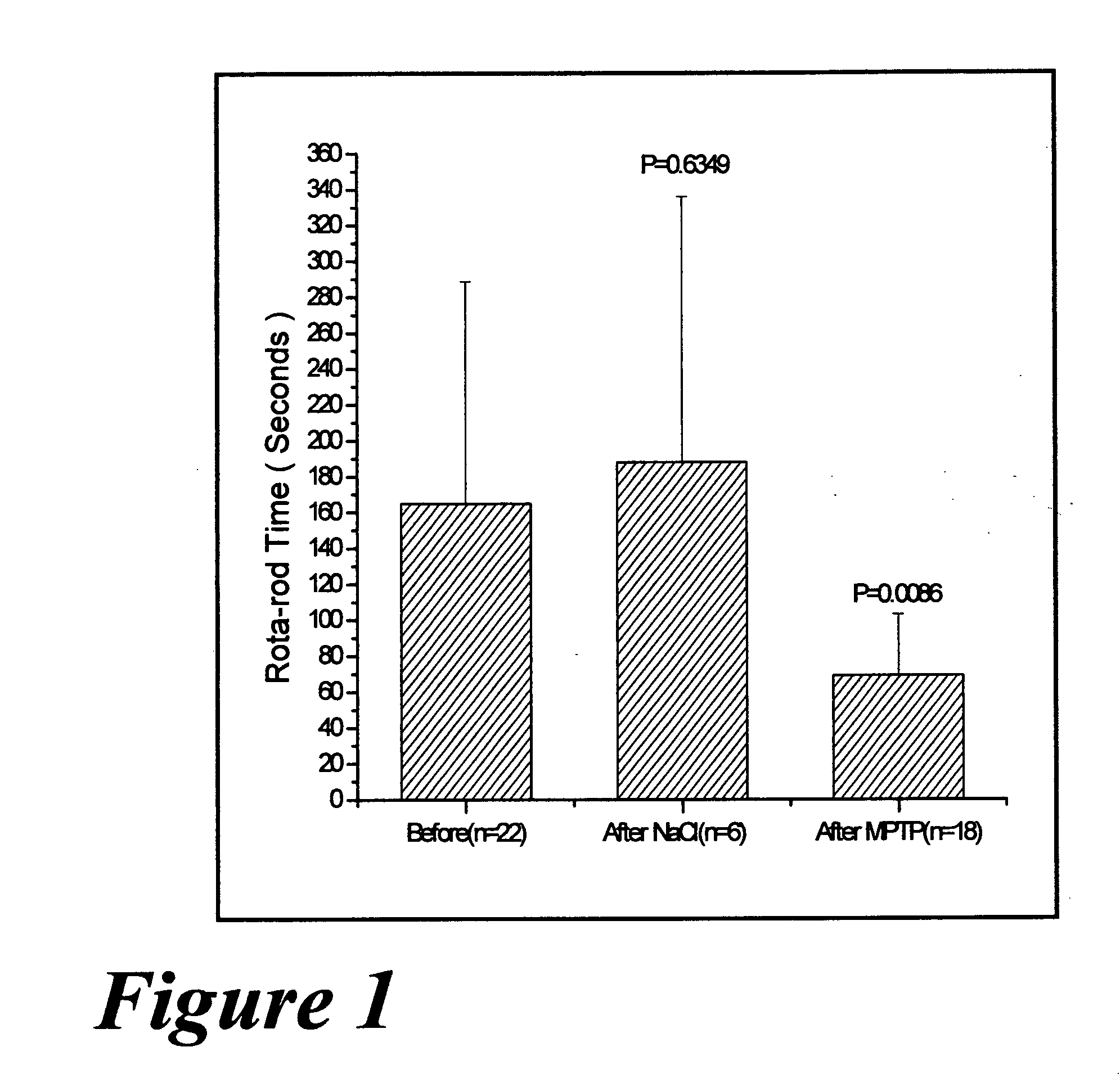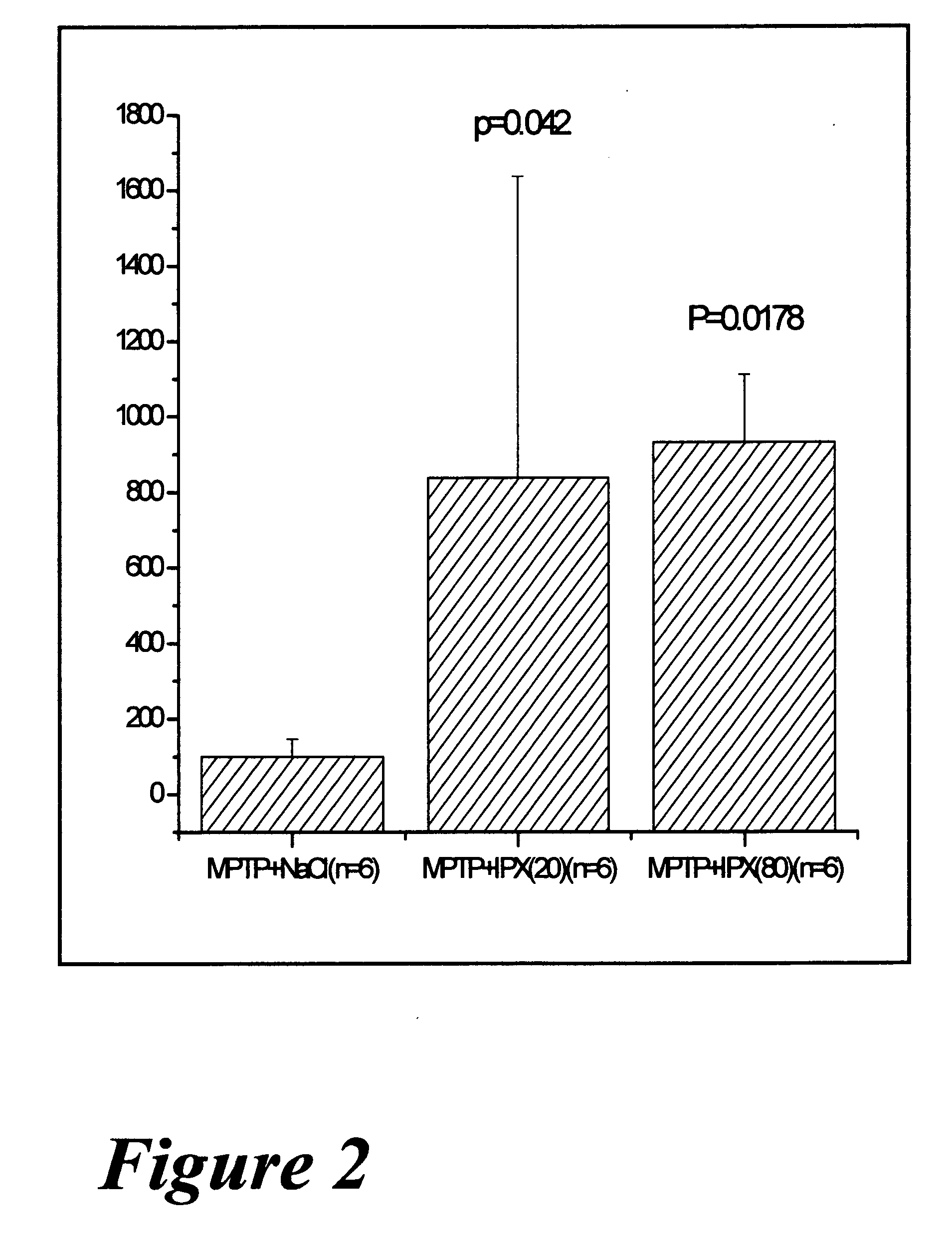Pharmaceutical dopamine glycoconjugate compositions and methods of their preparation and use
a technology of dopamine glycoconjugate and composition, applied in the field of dopaminergic composition, can solve the problems of lack of levodopa-based therapeutic potency, unstable and rapid inactivation in blood, and loss of nigrostriatal dopamine synthesis
- Summary
- Abstract
- Description
- Claims
- Application Information
AI Technical Summary
Problems solved by technology
Method used
Image
Examples
example 1
Preparation of Dopamine Gluconamide
[0153]
[0154] Gluconolactone (1.9 gm, 10.5 mmol) and triethylamine (TEA; 1.1 gm, 10.5 mmol) were added to methanol (25 mL) in a 100 mL round bottom flask with stirring. The gluconolactone was allowed to dissolve. When the solid was dissolved, the solution was stirred for an additional 10 minutes and then 3-hydroxytyramine (2.0 gm, 10.5 mmol) was added slowly, i.e., allowing it to dissolve. The reaction mixture was stirred in the dark for about 2 hrs. during which time a white solid precipitant appeared. The white solid precipitant was collected by filtration, washed with methanol (5 mL) and dried in vacuo for 6 hrs. to give dopamine gluconamide (1.69 gm, 5.10 mmol, 48.6% yield). Melting point of the synthesis product was 154-155° C. Predicted: C14H21N1 (331.32): C—50.75%, H—6.39%, N—4.23%; analysis results of synthetic product: C, 50.65; H, 6.63; N, 4.44.
example 2
Protection of Aromatic Dopamine Hydroxyl Residues
[0155]
[0156] Dopamine gluconamide (EXAMPLE 1, supra; 0.75 gm, 2.26 mmol) was added to acetone (40 mL) in a 100 mL round bottom flask with stirring. Then, the reaction mixture was refluxed for 2 hrs., after which time it was allowed to cool to room temperature (about 22-25 C). The resultant white solid was removed by filtration and dried in vacuo for 7 hrs. yielding the isopropylidine protected dopamine gluconamide (0.68 gm, 1.83 mmol, 81.0% yield). Melting point of the synthesis product was 170° C.
example 3
Reduction of Isopropylidine Protected Dopamine Gluconamide
[0157]
[0158] Isopropylidene protected dopamine gluconamide (EXAMPLE 2, supra; 0.68 gm, 1.83 mmol) was slowly added to a 1 M Borane solution in THF (25 ml) in a 100 mL round bottom flask, with stirring. The reaction mixture was refluxed for 2 hrs. and then allowed to cool to room temperature. Excess solvent was removed by rotary evaporation. Methanolic HCl was added to the resultant residue and the solution refluxed for 2 hrs., after which time solvent was removed by evaporation and the solid recrystalized using a mixture of acetonitrile and ethanol. The recrystalized reduced dopamine gluconamide product was dried in vacuo for 6 hrs giving the dopamine gluconamine-HCl salt (0.22 gm, 0.62 mmol, 33.8% recovery). Melting point for the synthesis product was 151-152° C. Predicted C14H24N1 (353.80); C, 47.53; H, 6.84; N, 3.96; Analysis result of synthesis product: C, 47.48; H, 6.93; N, 3.88.
PUM
| Property | Measurement | Unit |
|---|---|---|
| Mass | aaaaa | aaaaa |
| Mass | aaaaa | aaaaa |
| Mass | aaaaa | aaaaa |
Abstract
Description
Claims
Application Information
 Login to View More
Login to View More - R&D
- Intellectual Property
- Life Sciences
- Materials
- Tech Scout
- Unparalleled Data Quality
- Higher Quality Content
- 60% Fewer Hallucinations
Browse by: Latest US Patents, China's latest patents, Technical Efficacy Thesaurus, Application Domain, Technology Topic, Popular Technical Reports.
© 2025 PatSnap. All rights reserved.Legal|Privacy policy|Modern Slavery Act Transparency Statement|Sitemap|About US| Contact US: help@patsnap.com



